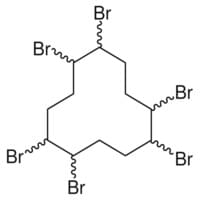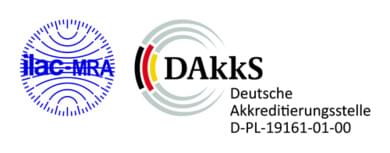Insulating materials made of polystyrene (Styropor) with more than 1000 ppm HBCD have been considered hazardous waste in Germany since 30.9.2016 according to the POP Ordinance andthe Waste Catalogue Ordinance, AVV (in German)
 What are HBCD
What are HBCD
HBCD, or HBCDD (Hexabromocyclododecane, C12H18Br6) is a flame retardant which, in addition to textiles and upholstered furniture, was mainly used in thermal insulation materials such as extruded (XPS) or expanded polystyrene rigid foams (EPS).
Environmental Harmfulness of HBCD
HBCD is harmful to the environment because it is long-lived (persistent), accumulates in organisms (bioaccumulative) and is toxic to reproduction. It is a persistent organic pollutant (POP).
Due to these properties, the EU already included HBCD in the list of substances of very high concern in 2008. For these substances, the EU Chemicals Regulation REACH requires an authorisation requirement. In 2013, the substance was also classified worldwide as a long-lived organic pollutant (POP) under the Stockholm Convention. Since November 2014, there has been a worldwide ban on production and use of the substance.
Classification of HBCD under waste law
According to Article 7 (2) of the POP Regulation ((EC) No 850/2004), waste containing persistent organic pollutants ("POPs") must be recovered or disposed of "in such a way that the persistent organic pollutants contained therein are destroyed or irreversibly transformed".
Insulating materials are considered "POP-containing" if their POP content is greater than or equal to a certain limit value concentration in Annex IV of the POP Ordinance or the German Ordinance on the European Waste Catalogue (Waste Catalogue Ordinance - AVV). The limit value of 1000 mg/kg set for HBCD became legally effective on 30 September 2016.
Consequences
Old polystyrene insulating materials typically show contents between 0.7% and 1.5% HBCD and are thus well above the limit value of 1000 ppm (0.1%).
Since 30 September 2016, they have been regarded as hazardous and subject to proof and may only be treated in waste incineration plants that have the corresponding approval.
According to the Waste Catalogue Ordinance, insulation waste containing HBCD will therefore be assigned the waste code number "17 06 03* other insulation material consisting of or containing hazardous substances" from 30 September 2016.
 Testing of insulating materials for HBCD
Testing of insulating materials for HBCD
On its pages (4), the Federal Environment Agency describes a rapid test based on X-ray fluorescence analysis developed by theFraunhofer Institute IVV and BASF SE.
In this test, HBCD is extracted from the insulating material with an organic solvent and its content in the solution/insulating material is determined with high precision using a handheld XRF.

